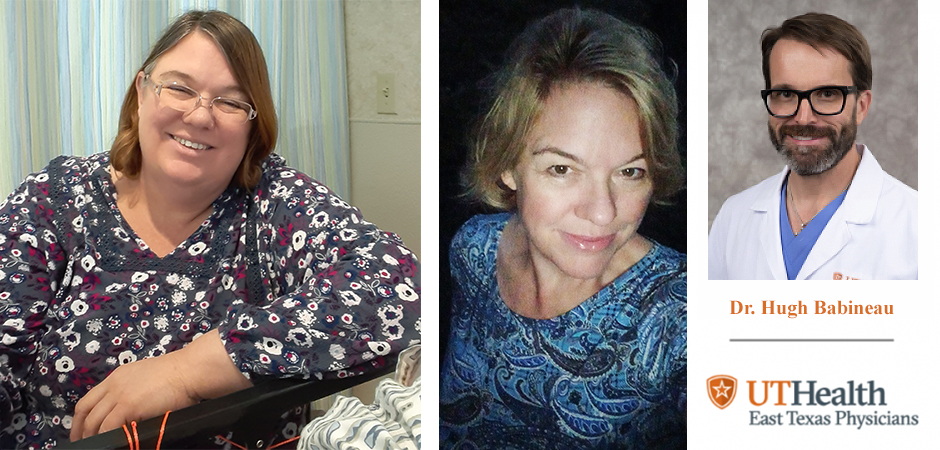
For Teresa Epps, the office manager of a local construction firm, managing her weight had been a constant battle. But after her successful gastric bypass surgery 2 years ago, she is now enjoying a healthy lifestyle with a fun and rather adventurous future.
“I struggled with my weight for a long time,” the 55-year-old Mount Vernon resident said. “I tried many diets and even lap band surgery.”
Lap band surgery involves placing an adjustable band around the top third of the patient’s stomach, leaving only a small area of the stomach to hold food and a larger area to digest the food.
While Teresa was initially successful in losing about 80 pounds, the first procedure may not have been the best for Teresa in the long term. Certain surgery types work better for particular patients, depending on their needs.
She also suffered from asthma, which affects the airways in the lungs. “With my weight, I had trouble walking and asthma made it hard to breathe. I just needed to get the weight off to improve my health.”
After consulting with Hugh P. Babineau, MD, bariatric surgeon and director of the UT Health Tyler Bariatric Center, Teresa decided to get the band removed and have gastric bypass surgery.
A month before the surgery, she weighed 363 pounds. She then started the pre-surgery liquid diet and was able to drop 11 pounds before the surgery.
Gastric Bypass Surgery
The gastric bypass procedure divides the stomach into two unequal parts. The top part, now called "the pouch," is only about the size of an egg. The rest of the stomach becomes called "the bypassed stomach," or "excluded stomach" because food and drinks no longer enter it. The bypassed stomach is not removed, and still makes stomach enzymes and juices.
Once the pouch has been created, food comes in at the top, and then leaves the pouch through a small opening called the “stoma," and travels into the intestines where digestion can take place. The juices from the bypassed stomach travel down a different part of the intestines, and ultimately are mixed with the food. No part of the stomach or intestines is removed. This results in a smaller stomach that gets filled quicker, thus keeping the patient from eating as much as before.
After a successful surgery with no complications, Teresa started the road to recovery and better health.
Healthy Eating and Active Lifestyle
“Because of the COVID-19 pandemic, there were no nutritional classes or exercise sessions, so I had to do it all at home,” she said. “But I got all the information I could possibly need from Dr. Babineau and his staff. They were so compassionate and nice. When you're really large, it can be very intimidating to ask for help, but Dr. Babineau and his staff made it very easy.”
Teresa also learned how to adjust her eating habits. “You have stages of eating to get used to your smaller stomach,” she explained.
She even uses a special diet fork, spoon and knife when she eats her meals. They are the same lengthwise as regular utensils, but the area with the prongs is much smaller. “They're tiny, so you can’t eat big bites of food.”
Teresa also had access to a support group on Facebook so she could ask questions to former patients. “They helped me know what to expect in the months after surgery.”
As for exercise, Teresa started slow and built up her endurance.
“During the first year I couldn't walk really well,” she said. “I have a long driveway, so down to the end and back is about a quarter of a mile. I struggled walking that distance once a day. Now that I’m 2 years post-surgery, I walk 4 miles every day and can even run a mile without stopping. This morning I weighed in at 175 pounds,” Teresa said triumphantly.
Looking Forward
Teresa’s better mobility and endurance will help her live an active lifestyle in the future. “I have 3 grandchildren and I love to run and play with them. It’s really, really nice to be able to do that. I can do things with them that I couldn’t do with my own kids.”
New adventures and activities on the horizon include going skydiving, traveling to Cheyenne, Wyoming to care for a grandchild and vacationing in Costa Rica, where she plans to go bungee jumping with her kids.
“I’ve never done it, you can’t do it when you’re big, so I’m really looking forward to it. It will be fun,” she said.
Sounds like a bright future – have fun, Teresa!
For more information and to find out if you qualify for weight-loss surgery, visit our web page or call our office at 903-593-0230.

